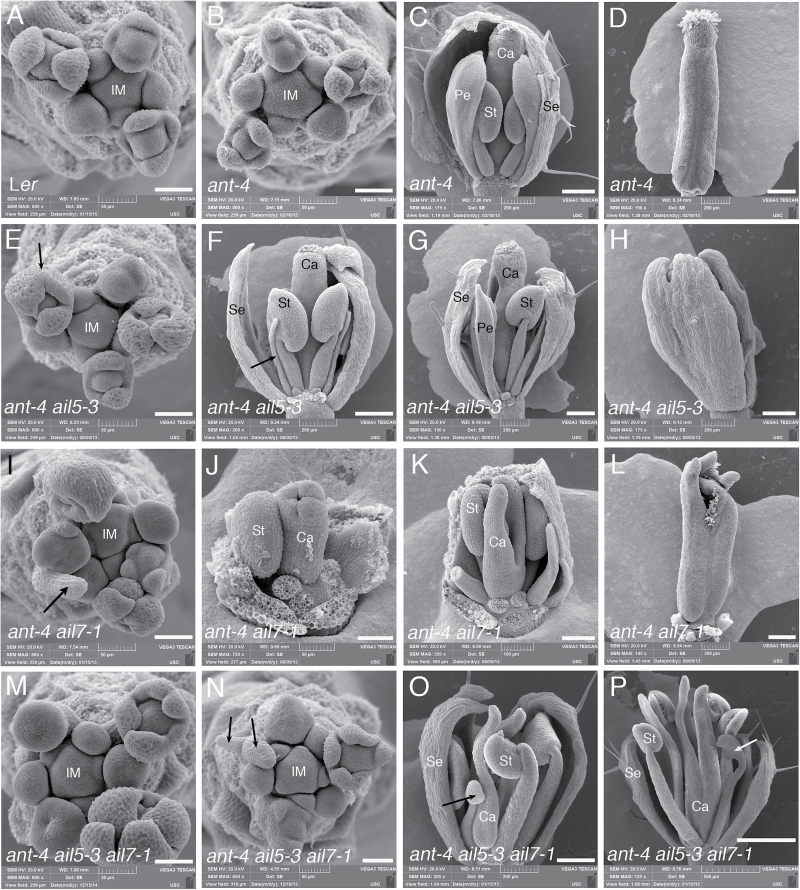Fig. 2.
Scanning electron micrographs of Ler, ant-4 and ant-4 ail mutant combinations. (A) Ler inflorescence meristem. (B) ant-4 inflorescence meristem. (C) ant-4 flower. (D) ant-4 carpels. (E) ant-4 ail5-3 inflorescence meristem. Arrow points to the reduced boundary between two adjacent sepal primordia. (F) ant-4 ail5-3 flower with filaments in the second whorl in place of petals. Arrow points to one filament. (G) ant-4 ail5-3 flower with a thin petal in the second whorl. (H) ant-4 ail5-3 flower with fused sepals. (I) ant-4 ail7-1 inflorescence meristem. Arrow points to filament-like structure that arises in place of a flower. (J) Young ant-4 ail7-1 flower showing abnormal development of the fourth whorl carpels. (K) ant-4 ail7-1 flower with two unfused carpels in the fourth whorl. (L) ant-4 ail7-1 carpels in which the valves are unfused at their apex and some stigmatic tissue arises at their edges. (M, N) ant-4 ail5-3 ail7-1 inflorescence meristems. Arrows in (N) point to filament-like structures that arise in place of flowers. (O, P) ant-4 ail5-3 ail7-1 flowers with stamenoid organs (arrows). IM, inflorescence meristem; Se, sepal; Pe, petal; St, stamen; Ca, carpel. Scale bars, 50 μm (A, B, E, I, J, M, N), 100 μm (K) 200 μm (C, D, F–H, L, O), 500 μm (P).

